- Home
- Neal Stephenson
Atmosphæra Incognita Page 3
Atmosphæra Incognita Read online
Page 3
For now, though, the tower’s lower reaches were a web of bare trusses with steelworkers, and their robots, crawling about. Welding arcs hung in it like bottled fireflies, and cranes pivoted and picked like hollow mantises. In most building sites, a crane had to be capable of hoisting itself higher as the building grew beneath it, but here the cranes had to keep working their way down the structure as it pushed up from the Struders. It wasn’t rocket science but it did make for some crowd-pleasing erector-set gymnastics, watched by vacationing families and know-it-all retirees from covered viewing platforms spotted around the ring road.
Rocket science was the domain of the innermost core, a ten-meter-diameter chimney running all the way up the tower’s central axis. During the first couple of years I had pestered Carl with questions about what specifically was going to go into that empty space—that perfectly round hole at the center of every floor plan.
“You’re assuming I have a secret plan,” he had said.
“You usually do.”
“My secret plan is that I have no secret plan.”
“Wow!”
“I am going to sell—you are going to sell—that right-of-way to the highest bidder. On eBay if necessary.”
“And what is the highest bidder going to put in it?”
“I have no idea. Since it is twenty kilometers long and pointed straight up, I’m going to make a wild guess that it will be something connected with hurling shit into space.”
“But you really don’t know what exactly?”
He had thrown up his hands. “Maybe a giant peashooter, maybe a rail-gun, maybe something that hasn’t been invented yet.”
“Then why did you pick ten meters for its diameter?”
“It was easier to remember than eleven point one three nine zero two four…”
“Okay, okay!”
The secret plan worked. The people who won the bidding war—a coalition of commercial space companies and defense contractors—gave the tower a shot of cash and credibility at a time when both had been a little tight.
Now cutting across the ring road, working against an outflow of traffic—workers coming off the day shift, headed home for the weekend—I passed a security checkpoint and rolled across a flyover that had been thrown across the circular railway line. This ramped down to ground level and became a road paralleling the Northwest Spoke.
Instead of paving the spokes all at once—which would have been a huge up-front expense—we had been building them just in time, a few meters and a few weeks in advance of where and when they would be needed. This made it possible to keep the paving crews employed on a steady full-time basis for years. So directly in front of the astonishing bulk of the Northwest Struder was this fringe of preparatory activity: orange flags marking the locations of soil samples, graded and tamped earth, a gray haze of webbed rebar, plywood forms, freshly poured concrete. The giant linked treads and looming hulk of the Struder rising just behind.
On the top of the Struder, evening-shift workers in safety harnesses were ascending from dressing rooms below to busy themselves on the most recently extruded truss section, inspecting, x-raying, installing sensors and lights and wires. A lot of that work had been done hundreds of miles away when the trusses were being prefabbed, but there didn’t seem to be any computer-driven process that couldn’t be improved upon by humans crawling around on the actual structure and writing on it with grease pencils. As the tower had risen up from the desert, data pouring in from its millions of strain gauges, thermocouples, cameras, and other sensors had given up oceans of information about how the models had, and hadn’t, gotten the predictions right, creating a demand for “tweaking crews” to make adjustments to newly extruded work before it got pushed so high into the sky that it became hard to reach.
There was more than one way to the top. Climbing hand over hand had become a new extreme sport. Helipads were available at various altitudes, and work was under way to build a new regional airport at what would eventually be the twenty-five-hundred-meter level—airplanes would land and take off by flying into and out of apertures in the tower’s side, saving them huge amounts of fuel as they avoided the usual ascent and descent.
Surrounding that ten-meter right-of-way in the middle were vertical elevator shafts. But the primary transport scheme was the helirail: a cross between a train, an elevator, and an amusement park ride that corkscrewed up the periphery of the structure, ascending at a steady twenty-degree angle. It was really just a simple ramp, about sixty kilometers long, that had been wrapped around the tower as it was built. Cut a triangle out of paper and roll it around a pencil if you want the general idea. Special trains ran on it with tilted floors so that you always felt you were on the level. Train stations were built around it every two thousand meters altitude. One of those—the second to last—had just been roughed in and was dangling there a few meters off the ground. I was able to clamber up into it via some scaffolding and catch the next up-bound train.
Actually train was too grand a word for this conveyance, which was just a single car with none of the luxury appurtenances that would be built into these things later when they were carrying droves of tourists and business moguls. All the regulars knew to empty their bladders first and to bring warm clothes even if it was a warm day at ground level. I shared my car with Joe, an aeronautical engineer who was headed up to fourteen thousand meters to inspect the servomechanisms on a wing; Nicky, an astronomer going to the Top Click to work on the mirror stabilization system for the big telescope a-building there; and Frog, a video producer readying a shoot about the BASE-jumping industry, which was already serving a thousand clients a year. After peppering us with recorded warnings, the car began to hum up the helirail, banking slightly on its gimbals as it picked up speed. A recorded message told us where to look for motion sickness pills and barf bags, then moved on to the more serious matter of what to do if we lost pressurization.
This was a pretty white-collar passenger manifest, but this was Friday afternoon and most of the workers were headed down for the weekend—as we could see when we looked into the windows of the crowded coaches spiraling down the opposite way.
For the hundredth time since leaving the funeral home, I reached out and patted the bundle of ashes in my bag. Carl had had a lot to be proud of and had not been shy about taking credit when earned. But I knew, just from watching his reactions, that he took special pride in having created countless blue-collar jobs. His family back home had been steelworkers, electricians, farmers. Carl had always been more comfortable with them than with the crowd at Sun Valley or TED, and when he had passed, the outpouring of grief from those people had been raw and unaffected.
As we spiraled up, we revolved through all points of the compass every four minutes or so. Views down the brown expanse of the Swath alternated with the panoramic storm front now blotting out the evening sun. The top fringes of the anvils were still afire with bent sunlight but their bases were hidden in indistinct blue-gray murk, cracked open here and there with ice-white lightning.
The car began to hum and keen as it pushed its way up into an eighty-mile-an-hour river of air. Bars of shadow began to flash down over us as we passed upward through a structure that resembled a six-sided ladder, with each rung a giant wing. For this part of the tower was not so much a structure in the conventional sense as a stationary glider. Or perhaps kite was the correct word for it.
The idea dated back to the very first months of the design process, when the engineers would work late into the evening tweaking their models and wake up in the morning to find long e-mails from Carl, time-stamped at three a.m. The weight of the tower—what Carl called the Steel Bill—kept growing. Sometimes it would creep up stealthily, others make a sickening upward lurch. The problem was wind. The only way to win that fight—or so the engineers thought at first—was to make the tower beefier, so that the downwind legs could push back. Beefy steel catches more wind, increasing the force that’s causing the problem in the first place. Not o
nly that but it demands more steel below to support its weight. This feedback loop produced exponential jumps in the Steel Bill whenever anything got adjusted.
It wasn’t long before someone pointed out that, from an aerodynamics standpoint, the tower was a horror show. Basically every strut and every cable was a cylinder—one of the draggiest shapes you can have. If we snapped an airfoil-shaped fairing around each of those cylinders, however, leaving it free to pivot into the wind, the drag went down by an order of magnitude and the Steel Bill dropped like—well, like a wrench dropped from the roof of a Top Click casino. And those fairings would have other benefits too; filled with lightweight insulation, they would reduce the thermal ups and downs caused by sunlight and direct exposure to space. The steel would live at a nice in-between temperature, not expanding and contracting so much, and brittleness would be less of a problem.
Everyone was feeling pretty satisfied with that solution when Carl raised an idea that, I suspect, some of the engineers had been hiding in their subsconscious and been afraid to voice: Why not fly the tower? If we were going to all the trouble to airfoilize everything, why not use the kind of airfoil that not only minimizes drag, but also produces lift?
Wings, in other words. The tower’s lateral braces—the horizontal struts that joined its verticals together at regular intervals—would be enclosed in burnished-aluminum wings, actuated by motors that could change their angle of attack, trimming the airfoils to generate greater or lesser amounts of lift. When the jet stream played on the tower’s upper reaches like a firehose slamming into a kid’s Tinkertoy contraption—when, in other words, the maximum possible crush was being imposed on the downwind legs—the wings on that side would be trimmed so as to lift the whole thing upward and relieve the strain. Performing a kind of aerodynamic jujitsu, redirecting the very energy that would destroy the tower to actively hold it up. The tower would become half building, half kite.
People’s understandable skepticism about that scheme had accounted for the need to maintain a huge empty swath downwind of it. Many took a dim view of a building that wouldn’t stand up without continuous control system feedback.
When we had boarded the helirail, I’d exchanged a bit of small talk with Joe, the engineer sitting across from me. Then he had unrolled a big display, apologizing for hogging so much table space, and spent most of the journey poring over a big three-dimensional technical drawing—the servomechanism he was going to take a look at. My eyes wandered to it, and I noticed he was studying me. When I caught him looking, he glanced away sheepishly. “Penny for your thoughts,” he mumbled.
“Oh, I spent years talking to concerned citizens in school gyms and senators in congressional hearings, selling them on this idea.”
“Which idea?”
“Exactly,” I said. “You’ve grown so used to it you don’t even see it. I’m talking about the idea of flying the tower.”
He shrugged. “It was going to require active damping anyway, to control oscillations,” he said.
“‘Otherwise, every slot machine on the Top Click will have to come equipped with a barf bag dispenser.’ Yeah, I used to make a living telling people that. ‘And from there it’s a small step to using the same capability to help support the tower on those rare occasions when the jet stream is hitting it.’”
Joe was nodding. “There’s no going back,” he said. “It snuck up on us.”
“What did?”
He was stumped for an answer and smiled helplessly for a moment. Then threw up his hands. “All things cyber. Anything with code in it. Anything connected to the Internet. This stuff creeped into our lives and we got dependent on it. Take it away and the economy crashes—just like the tower. You gotta embrace it.”
“Exactly,” I said. “My most vociferous opponent was a senator who was being kept alive by a pacemaker with a hundred thousand lines of embedded code.”
Joe nodded. “When I was younger, I was frustrated that we weren’t building big ambitious stuff anymore. Just writing dumb little apps. When Carl came along with the tower idea, and I understood it was going to have to fly—that it couldn’t even stand up without embedded networks—the light went on. We had to stop building things for a generation, just to absorb—to get saturated with—the mentality that everything’s net-worked, smart, active. Which enables us to build things that would have been impossible before, like you couldn’t build skyscrapers before steel.”
I nodded at the drawing in front of him, which had been looping through a little animation as we talked. “What’s new in your world?”
“Oh, doing some performance tweaks. Under certain conditions we get a rumble in the tower at about one-tenth of a hertz—you might have felt it. The servos can’t quite respond fast enough to defeat it. We’re developing a workaround. More for comfort than for safety. Might force us to replace some of the control units—it’s not something you can do by sitting on the ground typing.” He nodded toward the luggage rack by the door where he had deposited a bright yellow plastic case, obviously heavy.
“That’s okay,” I said, “sitting on the ground typing wasn’t Carl’s style.”
As if on cue the car dinged to warn us of impending deceleration. Joe began to collect his things. A minute later the car stopped in the middle of a sort of pod caught in the fretwork of the tower like a spider’s egg case in a web. Lights came on, for it was deep dusk at this point. A tubular gangway osculated with the car’s hatch, its pneumatic lips inflating to make an airtight seal. Air whooshed as a mild pressure difference was equalized, and my ears popped. The door dilated.
Joe nodded good-bye and lugged his bag case out into the station, which was a windowless bare metal tub. A minute later we were on our way again.
“I just wanted to introduce myself. Nicky Chu.” This was the astronomer en route to the Top Click. “Sorry, but I didn’t realize who you were until I heard your story.”
“Have you spent much time up there, Nicky?”
“Just once, for orientation and safety briefings.”
“Well, you’re always welcome in the bar. We’re having a little private observance tonight, but even so, feel free to stop in.”
“I heard,” Nicky said, and, perhaps in spite of herself, glanced toward the messenger bag. “I only wish I could have shared one of these rides with the man before…”
The pause was awkward. I said what Carl would have said: “Before he was incinerated in a giant kiln? Indeed.”
A SENATOR HAD ONCE described the Internet as a series of tubes, which didn’t describe the Internet very well but was a pretty apt characterization of the Top Click. “Shirtsleeves environment” had been the magic buzzword. I knew as much because Carl had once banned the phrase from PowerPoint slides—shortly before he had banned PowerPoint altogether, and then attempted to ban all meetings. “The Cape of Good Hope is not a shirtsleeves environment. Neither was the American West. The moon. The people who go to such places have an intrepid spirit that we ought to respect. I hate patronizing them by reassuring them it’s all going to be in a shirtsleeves environment!”
This sort of rant had terminated some awkward conversations with casino executives and hoteliers. I had donated a small but significant chunk of my life to getting him to admit that my job would be easier and the Top Click would be more valuable if it had a breathable atmosphere that wouldn’t cause simultaneous frostbite and sunburn. Building one big dome on the top was too inflexible, and we had ended up with a mess of cylindrical and hemispherical structures (because those shapes withstood pressurization) joined by tubular skybridges. The Top Click helirail terminal was a hemispherical dome, already awe-inspiring in a Roman Pantheon way even though it was just a shell. Radiating from it were tubes leading to unfinished casinos, hotels, office buildings, and the institute that Carl and some of his billionaire friends had endowed. The observatory was there, and that was where Nicky went after saying good-bye and exchanging contact data with me. I shouldered the bag with Carl in it and hiked d
own a tube to a lobby where I changed to another tube that took me to the First Bar in Space. Frog, the video producer, walked with me; having slept most of the way through the ride, he was in the mood for a drink. I helped him tow his luggage: a hard-shell case full of video gear and a Day-Glo pink backpack containing the parafoil he intended to use for the return trip.
It was a pretty small party. Carl didn’t have a lot of friends. Alexandra, his daughter from a long-dead marriage, had flown in from London with her boyfriend, Roger, who was some sort of whizbang financial geek from a posh family. Tess was there to greet me with a glass of wine and a kiss. Our kids were off at college and at camp. Carl’s younger brother Dave, a college volleyball coach, had come in from Ohio. He was already a little tipsy. Maxine, the CEO of Carl’s charitable foundation, and her husband, Tom, a filmmaker. We took over one corner of the bar, which was pretty quiet anyway. Maria the bartender and Hiram, one of the regulars, were watching a Canadian hockey game on the big screen. Hiram, a teetotalling Mohawk ironworker, was knocking back an organic smoothie. Frog grabbed a stool at the other end of the bar, ordered a Guinness, whipped out his phone, and launched into a series of “you’ll never guess where I’m calling from!” calls.
It was lovely to be home in my bar with my wife. I was just a few sips into that glass of wine, starting to wish that all of these nice guests would go away and leave us alone, when heads began to turn and I noticed that we had been joined by a woman in a space suit.
Not totally. Nicky Chu had had the good manners to remove the helmet and tuck it under her arm. She said, “Sorry, but I think we all need to get under cover. Or over cover is more like it.”

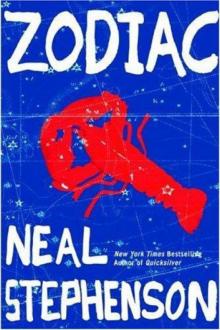 Zodiac: The Eco-Thriller
Zodiac: The Eco-Thriller The Mongoliad: Book One
The Mongoliad: Book One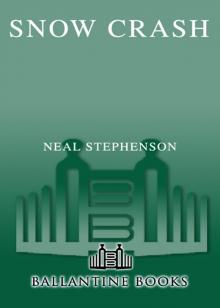 Snow Crash
Snow Crash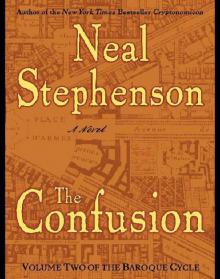 The Confusion: Volume Two of the Baroque Cycle
The Confusion: Volume Two of the Baroque Cycle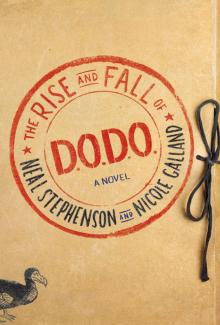 The Rise and Fall of D.O.D.O.
The Rise and Fall of D.O.D.O. The Diamond Age: Or, a Young Lady's Illustrated Primer
The Diamond Age: Or, a Young Lady's Illustrated Primer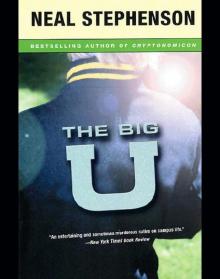 The Big U
The Big U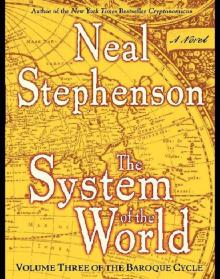 The System of the World: Volume Three of the Baroque Cycle
The System of the World: Volume Three of the Baroque Cycle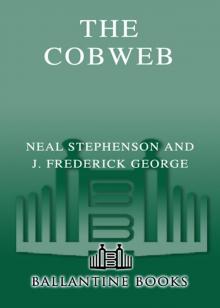 The Cobweb
The Cobweb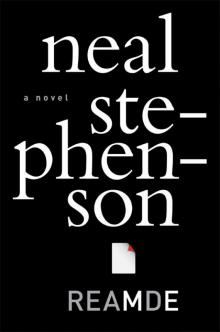 Reamde
Reamde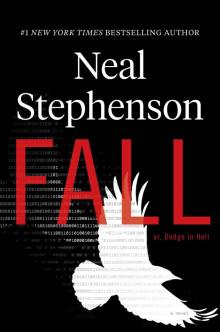 Fall; or, Dodge in Hell
Fall; or, Dodge in Hell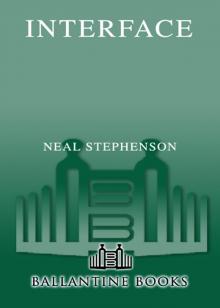 Interface
Interface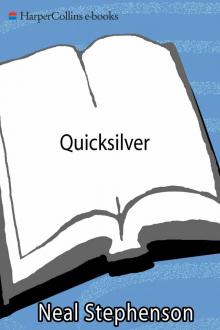 Quicksilver
Quicksilver The Mongoliad: Book Three
The Mongoliad: Book Three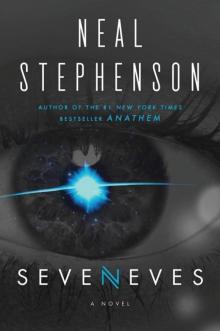 Seveneves
Seveneves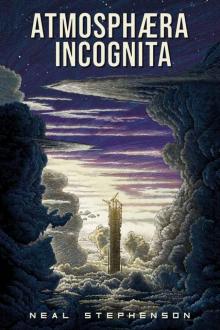 Atmosphæra Incognita
Atmosphæra Incognita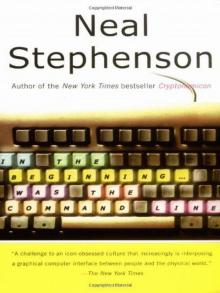 In the Beginning...Was the Command Line
In the Beginning...Was the Command Line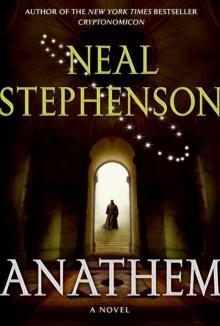 Anathem
Anathem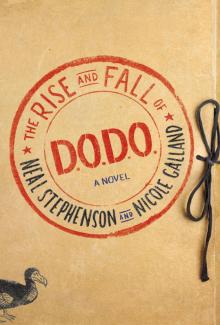 The Rise and Fall of D.O.D.O.: A Novel
The Rise and Fall of D.O.D.O.: A Novel The Mongoliad: Book Two
The Mongoliad: Book Two Diamond Age or a Young Lady's Illustrated Primer
Diamond Age or a Young Lady's Illustrated Primer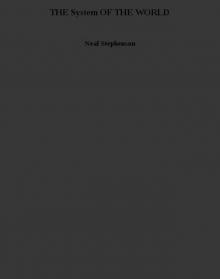 THE System OF THE WORLD
THE System OF THE WORLD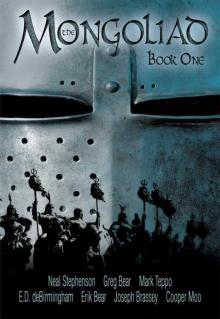 The Mongoliad: Book One tfs-1
The Mongoliad: Book One tfs-1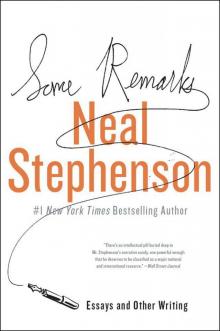 Some Remarks: Essays and Other Writing
Some Remarks: Essays and Other Writing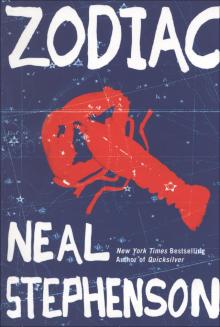 Zodiac
Zodiac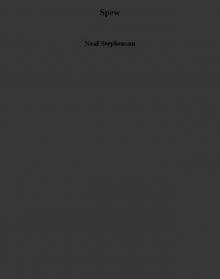 Spew
Spew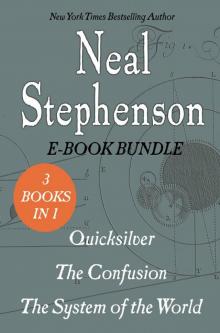 The Baroque Cycle: Quicksilver, the Confusion, and the System of the World
The Baroque Cycle: Quicksilver, the Confusion, and the System of the World The Diamond Age
The Diamond Age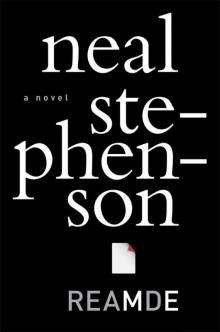 Reamde: A Novel
Reamde: A Novel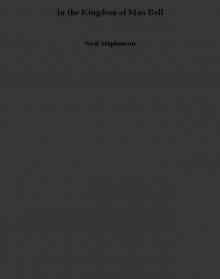 In the Kingdom of Mao Bell
In the Kingdom of Mao Bell Mother Earth Mother Board
Mother Earth Mother Board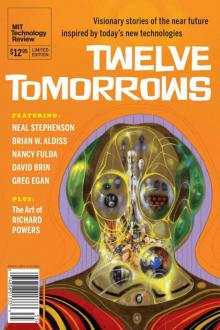 Twelve Tomorrows - Visionary stories of the near future inspired by today's technologies
Twelve Tomorrows - Visionary stories of the near future inspired by today's technologies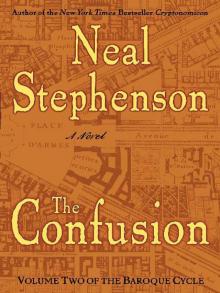 The Confusion
The Confusion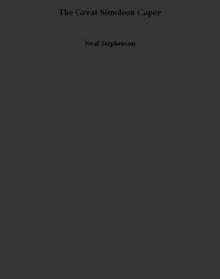 The Great Simoleon Caper
The Great Simoleon Caper The Mongoliad: Book Three tfs-3
The Mongoliad: Book Three tfs-3